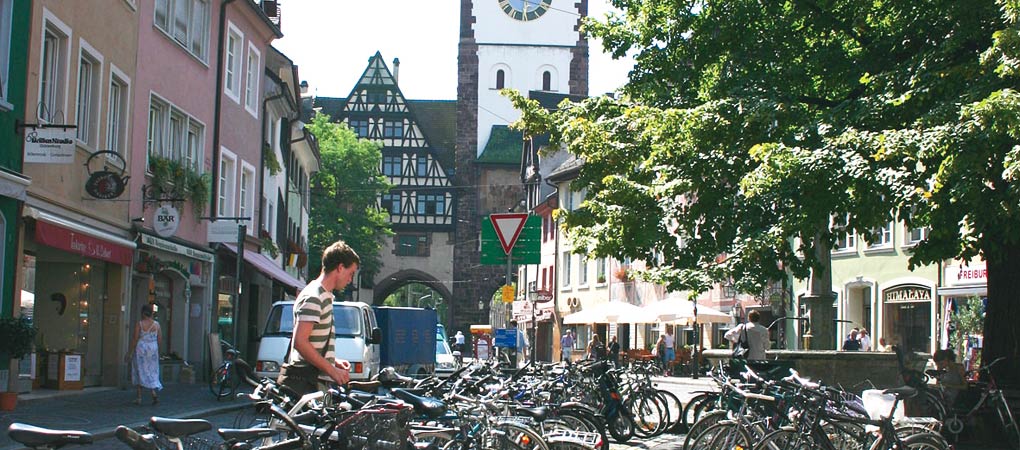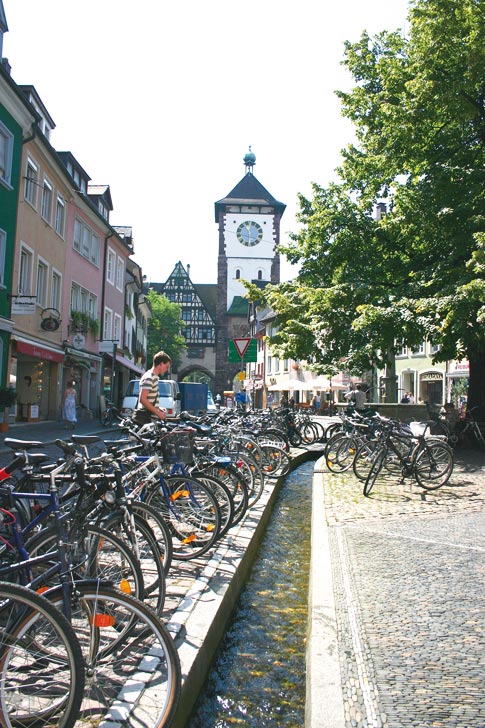Nochlezhka
Main objectives of the project
Date
- 2014:
Stakeholders
- Promotor: World Habitat
Location
City: Saint Petersburg
Country/Region: Russia, Saint Petersburg
Description
Nochlezhka is an independent charity that provides a wide range of services to, and advocates on behalf of, homeless people in Saint Petersburg. The city has a huge and growing homelessness problem, and, Nochlezhka apart, there are few services available to help. Nochlezhka operates in a harsh environment in which state help for homeless people is poor and there is little public sympathy for the issue. Winter temperatures are extremely cold and living on the street is perilous. Nochlezhka operates on a tiny budget and most of its services are provided to help homeless people but it is not able to make an impact in tackling the causes of homelessness itself. Nevertheless Nochlezhka is a lifeline to many people and is almost certainly responsible for saving hundreds of lives every year.
Project Description
What are its aims and objectives?
The organisation provides a large range of services to help and support the large population of homeless people who live in Saint Petersburg. It provides temporary accommodation to homeless people, as well as providing social, legal and psychological counselling for homeless people. The organisation also advocates improved systems of rehabilitation to the government and raises public awareness about the challenges faced by homeless people.
The organisation’s aims are:
- To ensure homeless people are not deprived of their human rights.
- To help homeless people off the street and return to an independent life.
- To challenge the generally negative publicly held myths and stereotypes about homelessness.
What context does it operate in?
Nochlezhka works in a highly challenging environment. The Russian public is generally ignorant about homelessness. There is widespread public intolerance and numerous myths about the causes and consequences of being homeless. Compared to most governments in Western Europe the state government does little to dispel the public perception and arguably exacerbates the situation with poor service provision for homeless people and significant underreporting of the scale of the problem.
The state requires people to complete a registration process and have a permanent address in order to access support from the government. This is a lengthy procedure.
The majority of homeless people have not completed and are unable to complete the registration process alone and therefore without help they do not qualify for state support.
A large number of people in Russia face homelessness due to difficult social and economic conditions. The Russian state does not recognise this fully and official statistics are believed to be unreliable. There is, however, little doubt that the scale of the problem is enormous. Some studies suggest that there are 4.5 million homeless people in Russia and the number is growing rapidly. The small number of services which are available are unable to deal with the demand. It is estimated that the average homeless person lives on the street for seven years.
Saint Petersburg is the second largest city in Russia with a population of just under five million people. Official statistics state that in 2002 there were 28,000 homeless people in the city. Nochlezhka estimates that the true figure is at least 60,000 in 2014. At the turn of the century the majority (more than 90 per cent) of homeless people were older men but this is changing and there is an increasing number of homeless women (20 per cent of homeless people in the city are women).
There is also a trend of children and younger people becoming homeless. Nochlezhka believes that there is now a substantial population of people who have lived their whole lives on the street.
Saint Petersburg experiences very cold winters during which many homeless people die. Temperatures of -20ºC are not uncommon. In the winter of 2012/13, 1,042 homeless people died of cold weather related conditions between November and March.
What are its key features?
Nochlezhka is one of very few organisations in Russia working on the issue of homelessness. It provides a range of services which provide basic support for homeless people in the city including shelters and hot meals. It also helps homeless people access state services and provides advocacy, public information and campaigning to challenge discrimination of homeless people.
Nochlezhka is the Russian word for Night Shelter and indeed the organisation started in 1990 with a single shelter. Nochlezhka still operates this 52 bed unit, which is the largest in the city. In addition, they operate heated tents during the winter months with a capacity of 50-60 people. Here homeless people can get shelter, hot food and help from medical and social workers. They also operate a “half way house” for recovering alcoholics and a night bus, which distributes hot meals.
A large part of Nochlezhka’s work is helping homeless people access state help. This involves helping people obtain registration and passports and helping them access government backed health insurance policies.
They publish a handbook annually to help inform homeless people about how to access state help and benefits. A ‘social contract’ is prepared to help people to become independent and goals are set to include assistance with employment, finding relatives and arranging documents.
The organisation has an increasing advocacy role. Its lawyers frequently take legal cases to the prosecutor’s office challenging unfair discrimination of homeless people. Its work also involves working with local government to influence local polices so that they do not discriminate and are better aligned to help homeless people. Nochlezhka also runs public awareness campaigns and writes media articles to challenge public attitudes to homelessness. It has achieved a high media profile and has received significant coverage on TV and in newspapers.
How is it funded?
Nochlezhka is a charity that operates on a very small budget. Its turnover is an estimated £250,000 a year. The vast majority of its income is from a wide range of private and corporate donations. It also runs music festivals and other fundraising events. Approximately 20 per cent of its funds come from the city government. The charity returns an equivalent amount in rents and in taxes to the city government.
What impact has it had?
In 2013, Nochlezhka helped 8,083 people. Some of them received food, others used the night shelter or the services provided on the charity’s night bus. On average 1,000 homeless people request aid in terms of free meals, clothing, shelter and legal consultation every week. The charity has a growing impact on enabling people to return to independent life. In 2013, 320 people were successfully helped in this way. The charity helped 29 people get jobs, 44 moved to another city to get employment, 19 received their passport, 14 received legal support in court and 15 received temporary registration. Twenty-four people received support to overcome alcohol dependency, out of which 18 overcame the dependency.
Why is it innovative?
Nochlezhka states it is the only organisation in Russia working on the issues of homelessness. It has demonstrated a model in which people could apply for support, which includes shelter, legal advice, medical aid and protection from the cold. The NGO develops plans to move people out of homelessness. The NGO initiated an approach with a major focus on rehabilitation and a minor focus on physical shelter. They have introduced a method called, ‘case management’, which looks at the needs, situation and past history of each person requiring support. Followed by this, a comprehensive action plan is prepared which includes social workers, psychologists and others. Based on the nature of support, volunteers also used to provide the support.
What is the environmental impact?
The organisation does not construct new buildings and makes use of existing buildings. It intends to construct an eco-friendly building and promotes the reuse of goods and materials in their centre.
Is it financially sustainable?
Nochlezhka appears to have a highly effective fundraising capacity. It raises funds through a combination of foreign donors and local events including TV campaigns and music festivals. It also relies on volunteers, who are all local. The charity has a large and diverse range of donors. 40 per cent of donations are from foreign donors. Political tension between Russia and the west has led to many foreign donors suspending their donations during 2012 and 2013 but this has been more than offset by an increase in private donations from within Russia. This in itself is a significant achievement given the public’s generally negative view of homelessness.
What is the social impact?
The social impact of the organisation is significant. Not only does the charity succeed in keeping thousands of homeless people alive, it is increasingly effective in enabling them to overcome medical and bureaucratic barriers to become independent.
Significantly the charity confronts public attitudes and challenges discrimination to homelessness people in society.
Barriers
The state owned shelter centres are in poor condition and a continuous investment is needed to bring them to a minimum standard and to support ongoing maintenance. With an increasing number of homeless people, this is a major task for the project. The other barrier is about the negative public attitude towards homeless people. Nochlezhka works on these issues by raising public awareness and maintaining the centres.
Lessons Learned
The most important lesson learned is to understand that shelter is not only a temporary need and it includes all aspects of social rehabilitation. Most of the official programmes in Russia are designed to provide shelter for a certain duration, with very little support for reintegration. This means that people are rehabilitated for a short period and end up on the streets again.
Evaluation
Nochlezhka keeps a good record of the services provided and the people receiving those services. They also collect beneficiaries’ stories. However, the foundation has not provided any evidence of its long term impact.
Transfer
The scaling up of the project is limited and so far only state employees have taken up the approaches they have learned from the NGO. Nochlezhka hopes that the government will take the approach forward but this has not been done due to the challenging social and economic context.
The programme has not been transferred although Nochlezhka actively shares its experiences.
NGOs from other parts of Russia send questions to Nochlezhka on issues concerning homelessness.
The organisation has prepared a manual and videos about its work and shared internationally.



 Freiburg has long had an emphasis on citizen engagement. There are many opportunities for citizens to be engaged within their communities and in city-wide campaigns for environmental improvement. When the two new urban areas were developed local community forums were established which acted as joint place promoters, offering critical support to the city council and through its energy and activism, encouraging it to move forwards.
Freiburg has long had an emphasis on citizen engagement. There are many opportunities for citizens to be engaged within their communities and in city-wide campaigns for environmental improvement. When the two new urban areas were developed local community forums were established which acted as joint place promoters, offering critical support to the city council and through its energy and activism, encouraging it to move forwards.